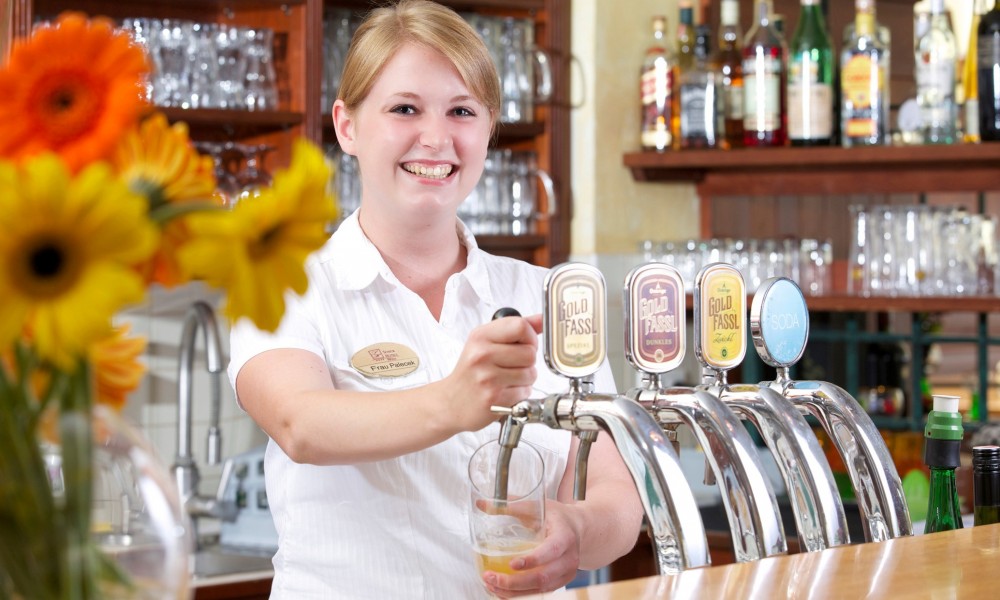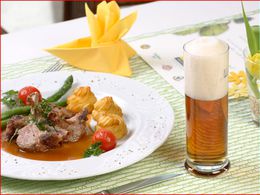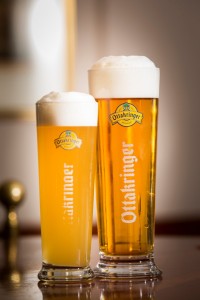Viennese beer – part 3

The way to top-tier gastronomy
I have to admit – actually I consider myself more of a wine than a beer drinker. However, if there’s a lovely, shaded beer garden along my path during the summer, I sometimes like to order a small beer or a shandy (called “Radler” in Austria), and a classic Viennese “Saftgulasch” or potato goulash is practically unthinkable without an accompanying beer. This is something the typical Viennese taverns have recognized already more than 100 years ago, and it has remained to this day. The numerous pubs that have sprung out of Viennese soil during the past twenty years highlight the upward trend of beer in Vienna. And recently, top restaurants have cast their eyes on the traditional “barley juice.”
Beer with a menu – the new trend
Wine is tasted – beer is drunk. This sentence basically reflects the behavior of a majority of Austria’s consumers. While with wine, every genuine or would-be gourmet is overrun by tastings, results of blind taste tests, wine guides, technical terms and recommendations, there’s still considerable potential for beer in this regard.
Beer as an accompaniment to foods or even as a complete accompaniment to a set meal is happily becoming more and more of a topic. As was the case in the early days of wines accompanying meals, small problems arise with beers served with set meals.
Generally, restaurants and taverns only sell a limited number of different beers – an economic factor that you have to know and understand. Yet this also used to be the case with wine – one white and one red wine available by the glass, pure or mixed with sparkling mineral water, were the usual standard before the wine menus were expanded due to increasing demand.
The larger serving sizes of beer present an additional problem. While 1/8 liter of wine is generally served for each course as part of a set menu with wine accompaniment, this becomes difficult with 1/3 liter bottles. This amount is too much for one course, and smaller amounts such as a “Pfiff” in Austria (1/5 of a liter) are only possible for beer on tap – which in turn limits the variety. There are a few large bottles of 3/4 of a liter that can be ordered more or less like a bottle of wine. High-quality beers can easily cost as much as 40 euros – entirely justified, yet what we’re used to for wines by the bottle hasn’t yet embedded itself in our minds.
Don’t worry, though – all these adversities also existed for wine, and the development shows that change is possible and takes place faster and faster. This variant of accompanying drink may not yet be a product that guests ask about, but if a restaurateur offers beer accompanying meals on the menu, customers order it more and more – which sometimes makes for pleasant surprises.
Which beer goes with which food?
Salad: light Weizenbier (wheat beer), light lager, export
cooked fish: light Weizenbier, light lager, export
fried fish: dark lager, pilsner, Altbier (lit. “old beer”)
poultry: light Weizenbier, light lager, export, pilsner
seafood: pilsner, light Weizenbier, export
roasts: pilsner, dark lager, Altbier, Malztrunk (malt beer)
steaks: dark bock beer, Schwarzbier (black beer), pilsner, Altbier
game: bock beer, Schwarzbier, Altbier, dark Weizenbier
mild cheese: light lager, Weizenbier, export
strong cheese: bock beer, Altbier, pilsner, dark lager
sweet desserts: light Weizenbier, bock beer, malt beer
To this end, probably every beer sommelier will also have his or her own special opinion and would also propose other combinations. As for wine, the same holds for beer: Exceptions are expressly desired! It just has to taste good – that’s the most important thing.
So that guests enjoy the experience to the fullest, beer sommeliers are in very high demand. The rush to get the commensurate training is palpably stronger, as restaurateurs and their employees not only seek to bring the right beers for dining closer to their guests – as with wine – they also wish to present these beers in the best possible way in order to highlight their respective flavors. Like with wine, temperature and the right glass are important factors which should be learned.
Naturally, such beer sommeliers can also “educate” guests a bit – those who come to grips with wine terminology such as “terroir,” “bouquet” and the like will also take pleasure in beer’s technical terms. That’s how you can score points among your friends.
Here are some examples from the lexicon of Viennese beer:
Bock:
Higher original gravity and mixed with less water, it therefore has a higher concentration. Traditionally available mostly during the Lenten season in Advent and prior to Easter (Festbock [festival bock], Osterbock [Easter bock]), it is also available as Maibock (May bock). Bock beers are available in both top-fermented (ale) and bottom-fermented (lager) variants, and most have around 6% alcohol content. The strongest bock beer in the world is “Eisbock” (ice bock). As with Eiswein (ice wine), the beer becomes highly concentrated by the removal of frozen water, which makes for a striking increase of alcohol content of up to 40 percent by volume.
Lager:
Bottom-fermented, not excessively strongly hopped beer with medium alcohol content. The standard beer drunk worldwide. The so-called “Viennese lager” in the form in which the pioneer Anton Dreher brewed it at Schwechater Brewery in the 19th century is currently undergoing a comeback in the brewing scene.
Pilsner:
Among the lightest in color, clearest and most flavorful beers. It owes its name to its place of origin, Pilsen (Czech Republic). Strong to very strong hop flavor.
Zwickelbier:
Naturally cloudy, unfiltered beer that was originally taken straight from the tap. Today, it is highly commercialized and very popular in gastronomy.
Weissbier:
Popular top-fermented beer (ale) with typical taste of wheat malt and fruit esters of yeast. Broad spectrum of varieties, particularly in Bavaria.
Per capita consumption:
On average, Austrians drink approximately 108 liters of beer per year, whereby we Austrians are in second place after the Czech Republic with approximately 145 liters of beer per person per year (2012 statistic).
Now the beer stein is really full – I’ve written enough, and it’s the perfect time of year to enjoy a freshly tapped Viennese beer at a pub, your favorite restaurant or a lovely Viennese beer garden.
As we say here, “Hops and malt – may God preserve them!”
Image and data credits: © Wikipedia, A la Carte Bookazine.













